✓ Find the best offers on your Stays on 🏡 booking.com
✓ Deals on Private xfers, SIM Cards, City tours, Day trips on 🛵 GetYourGuide | on 🛵 Klook
Follow park rules and regulations when interacting with the wildlife.
2. Cotopaxi Volcano

Cotopaxi is an active stratovolcano located in the Andes Mountains of Ecuador, standing at 5,897 meters in elevation.
What to see or do: A popular attraction for visitors and hikers, Cotopaxi offers stunning views of the surrounding landscape, including the nearby glaciers. Visitors can hike up to the mountain’s refuge and reach the glacier’s edge with a guide.
Don’t miss: The opportunity to witness the breathtaking sunrise over the mountaintops. On clear days, you can see stunning views of the surrounding valleys and cities from the mountain’s summit.
Insider travel tips: Be sure to bring warm clothing and appropriate hiking gear as temperatures can drop significantly on the mountain. It is best to visit during the dry season (June to September) for the best views and weather.
Consider booking a guided tour to ensure a safe and enjoyable experience.
3. Quilotoa Lagoon
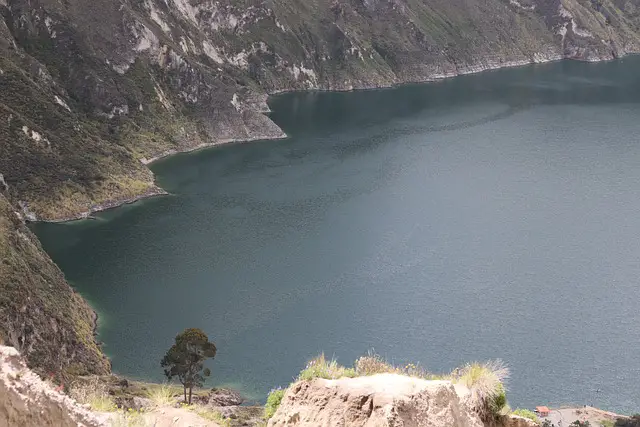
Quilotoa Lagoon is a stunning volcanic crater lake located in the Cotopaxi Province of Ecuador.
What to see or do: Take a hike around the rim of the crater to witness breathtaking views of the turquoise-colored lake. You can also rent a kayak or take a dip in the chilly waters of the lagoon.
Don’t miss: Be sure to visit the small indigenous communities surrounding the lagoon to learn about their way of life and purchase traditional handicrafts.
Insider travel tips: Bring warm clothing as the temperature can drop rapidly. Allow time to acclimatize to the high altitude, as the lagoon sits at 3,800 meters above sea level.
Consider staying overnight to enjoy the calm and tranquil atmosphere of the area.
4. Tungurahua Volcano

Tungurahua is an active stratovolcano located in the Andes of Ecuador.
What to see or do: Visitors can witness the awe-inspiring sight of lava eruptions and volcanic ash clouds billowing out of the crater.
Don’t miss: The best views of the volcano can be seen from the town of Baños, located just a few miles away.
Also, don’t miss the chance to hike to the summit of the nearby Chimborazo Volcano, one of the highest peaks in South America.
Insider travel tips: It is important to check the current volcanic activity status before planning a visit. It is also recommended to bring warm clothing, as temperatures can drop quickly at high altitudes.
Additionally, hiring a local guide is highly recommended to ensure a safe and enjoyable trip.
5. Amazon Rainforest

The Amazon Rainforest is the world’s largest tropical rainforest, spanning across 9 countries in South America. It covers over 5.
5 million square kilometers and is home to millions of species of plants and animals.
What to see or do: Visitors can explore the rainforest by hiking, canoeing, or taking a guided tour.
There are many lodges and eco-tourism companies that offer visitors the opportunity to see unique wildlife like jaguars, monkeys, and exotic birds.
Don’t miss: One of the most iconic activities in the Amazon Rainforest is a trip down the Amazon River. During this journey, visitors can take in the stunning vistas of the jungle and see unique creatures like pink dolphins.
Insider travel tips: Be sure to pack appropriate gear such as insect repellent and a sturdy pair of hiking boots. Also, be prepared for high humidity and rain.
It’s best to visit during the cooler, drier months between June and November. Always use a reputable tour operator to ensure your safety in the jungle.
6. Yasuni National Park

Yasuni National Park is a UNESCO Biosphere Reserve located in the Amazonian region of Ecuador.
What to see or do:
Don’t miss:
Insider travel tips:
7. Cuyabeno Wildlife Reserve
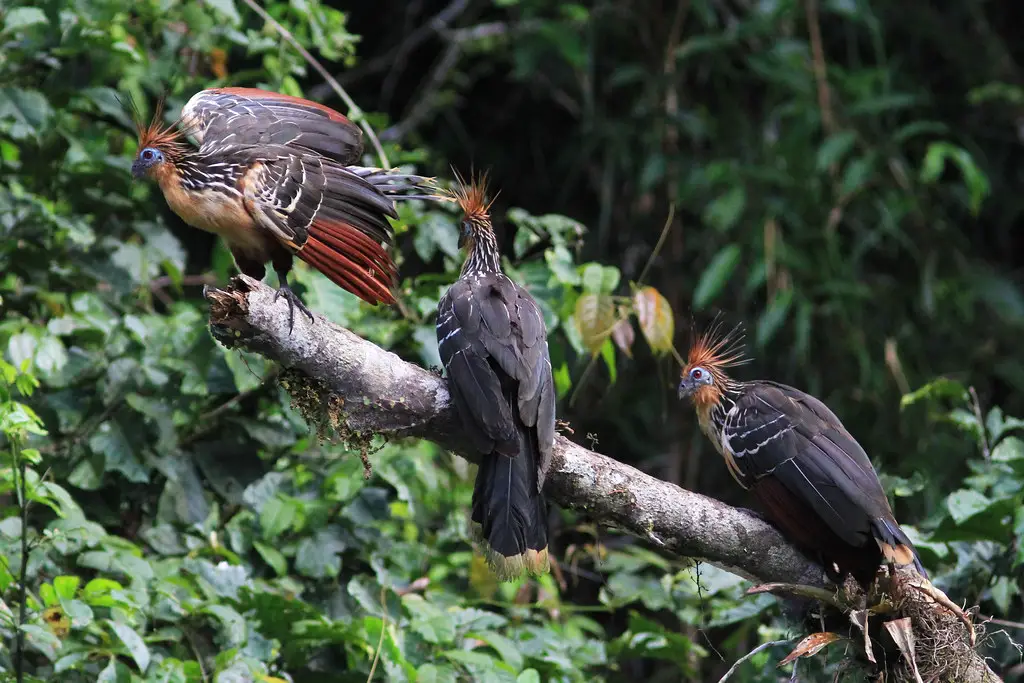
Cuyabeno Wildlife Reserve is a protected area in the Ecuadorian Amazon rainforest known for its abundant biodiversity.
What to see or do: Explore the reserve on eco-tours, hiking and canoeing trips, or spend time with the local communities and learn about their way of life.
Experience the beauty of the rainforest, spot unique wildlife, and witness the indigenous cultures firsthand.
Don’t miss: Take a night-time canoe ride to see the nocturnal animals like caimans and owls. Visit the Laguna Grande, where you can enjoy the stunning beauty of the area and witness the magnificent pink dolphins.
Insider travel tips: Bring insect repellent, sunscreen, a rain poncho, and a waterproof camera. When hiking, always wear long-sleeved clothing and boots to avoid insect bites.
Stay in an eco-lodge near Laguna Grande to immerse in the rainforest experience. Avoid the rainy season from March to August, when the trails can be muddy and difficult to navigate.
8. Papallacta Hot Springs

Papallacta Hot Springs is a spa resort located in the Andean mountains of Ecuador known for its natural hot springs that are rich in minerals.
What to see or do: Take a dip in one of the 18 hot pools and enjoy the stunning views of the surrounding mountains. The resort also offers various spa treatments, including massages, facials, and hydrotherapy sessions.
Don’t miss: The outdoor thermal pool, which is the largest and one of the hottest pools in the complex. It’s perfect for soaking and relaxing after a long day of hiking or exploring the area.
Insider travel tips: – It’s best to arrive early in the morning to beat the crowds and enjoy the pools when they’re at their cleanest.
9. El Altar Volcano
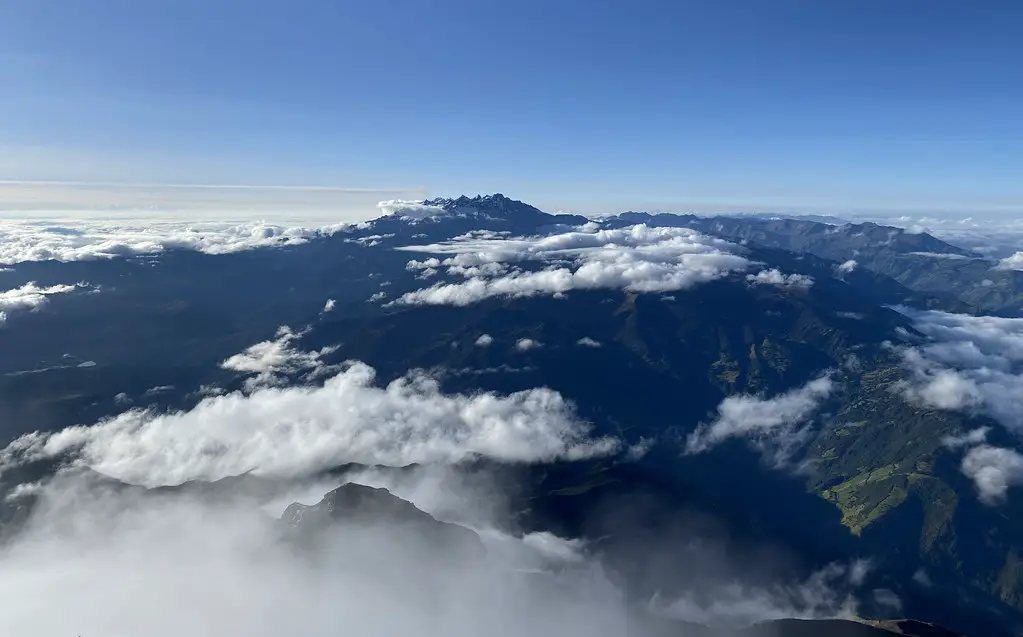
El Altar Volcano is a dormant volcano located in the Sangay National Park in the Andes Mountains of Ecuador.
What to see or do: Hiking is the primary activity in the area, offering stunning views of the surrounding landscape and the volcanic crater. Visitors can camp overnight near the volcano or take guided tours to explore the park’s stunning beauty.
Don’t miss: The stunning Laguna Amarilla, a lake situated in the collapse zone of the former El Altar Volcano crater, is a must-visit for anyone traveling to the area.
Insider travel tips: Visitors should prepare for exposure to unpredictable weather conditions, especially during the rainy season from January to May.
Proper hiking equipment and clothing are essential, as well as plenty of water and snacks to ensure a safe and enjoyable visit.
Additionally, it’s best to visit the volcano with a knowledgeable guide who can provide information on the area’s history and geography, as well as ensure visitor safety.
10. Mindo Cloud Forest

Mindo Cloud Forest is a beautiful and lush jungle located in the Andean foothills of Ecuador.
What to see or do: Zip-line through the canopy and get a bird’s eye view of the forest.
Don’t miss: Be sure to check out the Mindo Lago, a serene lake perfect for a picnic or paddle boat ride.
Insider travel tips: Bring a rain jacket or umbrella as rain is common in the cloud forest.
11. Laguna de Cuicocha

Laguna de Cuicocha is a volcanic crater lake located in the Imbabura Province of Ecuador at an altitude of 3,246 meters.
What to see or do: Visitors can take a boat tour around the lake, hike along its scenic trails, or enjoy a picnic on its shores.
The lake is surrounded by the Cotacachi-Cayapas Ecological Reserve, which is home to a variety of bird species and Andean wildlife.
Don’t miss: Don’t miss the chance to see the lake’s two small islands, Yerovi and Teodoro Wolf, which are both remnants of volcanic activity and add to the lake’s beauty.
Insider travel tips: – Bring warm clothing, as weather can be chilly at this high altitude.
12. La Mitad del Mundo monument

La Mitad del Mundo monument is a large stone monument located in Quito, Ecuador that marks the equator, which is the imaginary line that divides the Earth into the Northern and Southern Hemispheres.
What to see or do: Visitors can take a tour of the monument, which includes a visit to the Equator Museum that showcases the different indigenous groups of Ecuador.
You can also stand across the Equator line on both sides and experiment with science-related activities, like the famous water experiment that proves that water flows differently in each hemisphere.
Don’t miss: The highlight of a visit to La Mitad del Mundo monument is stepping on the equator itself and taking the perfect photo with one foot in the Northern Hemisphere and the other in the Southern Hemisphere.
Insider travel tips: The best time to visit La Mitad del Mundo monument is during the dry season, which runs from June to September and December to January.
13. Pululahua Geobotanical Reserve

Pululahua Geobotanical Reserve is a dormant volcanic crater in Ecuador, home to a thriving ecosystem of flora and fauna.
What to see or do: Visitors can explore the reserve’s hiking trails, take guided nature walks, and visit the nearby interpretation center to learn about the unique geology and history of the area.
Don’t miss: The opportunity to see the reserve’s unique plant and animal species, including orchids, hummingbirds, and the endangered spectacled bear.
Insider travel tips: Be sure to bring a jacket or sweater, as temperatures in the reserve can be cooler than in the surrounding areas.
Also, try to visit in the morning when the clouds are lower, as the views from the crater’s rim are truly breathtaking.
14. San Rafael Falls
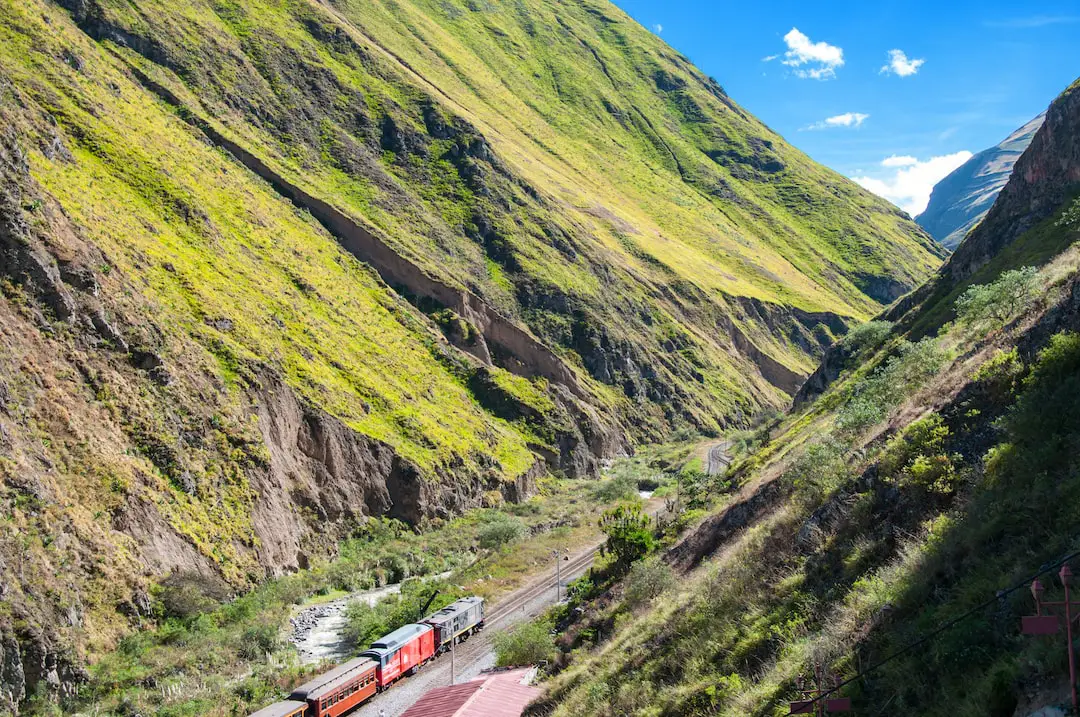
San Rafael Falls is a magnificent waterfall located in the Ecuadorian Andes.
What to see or do: Take in the spectacular views of the falls as the water cascades down from a height of 150 meters. The area surrounding the falls is also incredibly scenic, with lush green vegetation and diverse wildlife species.
Don’t miss: Visiting the nearby town of Misahuallí, where you can enjoy outdoor activities such as hiking, kayaking, and zip-lining.
Insider travel tips: – The best time to visit San Rafael Falls is during the rainy season, from March to August, when the water flow is at its strongest.
15. Baños de Agua Santa

A small town located in the Andean highlands of Ecuador known for its hot springs and adventure sports.
What to see or do: Visit the hot springs, go bungee jumping or zip-lining, hike to the famous Casa del Arbol swing, explore the waterfalls, and try dishes made with the town’s speciality ingredient, local tree ferns.
Don’t miss: The Tungurahua Volcano, which can be seen from various viewpoints around the town, especially at night when it erupts.
Insider travel tips: Make sure to bring warm clothes as the town can get chilly, especially at night. Also, take advantage of the many affordable adventure activities offered by local tour companies.
Additionally, try to visit during the week as the town can get quite crowded on weekends.
16. Los Frailes Beach
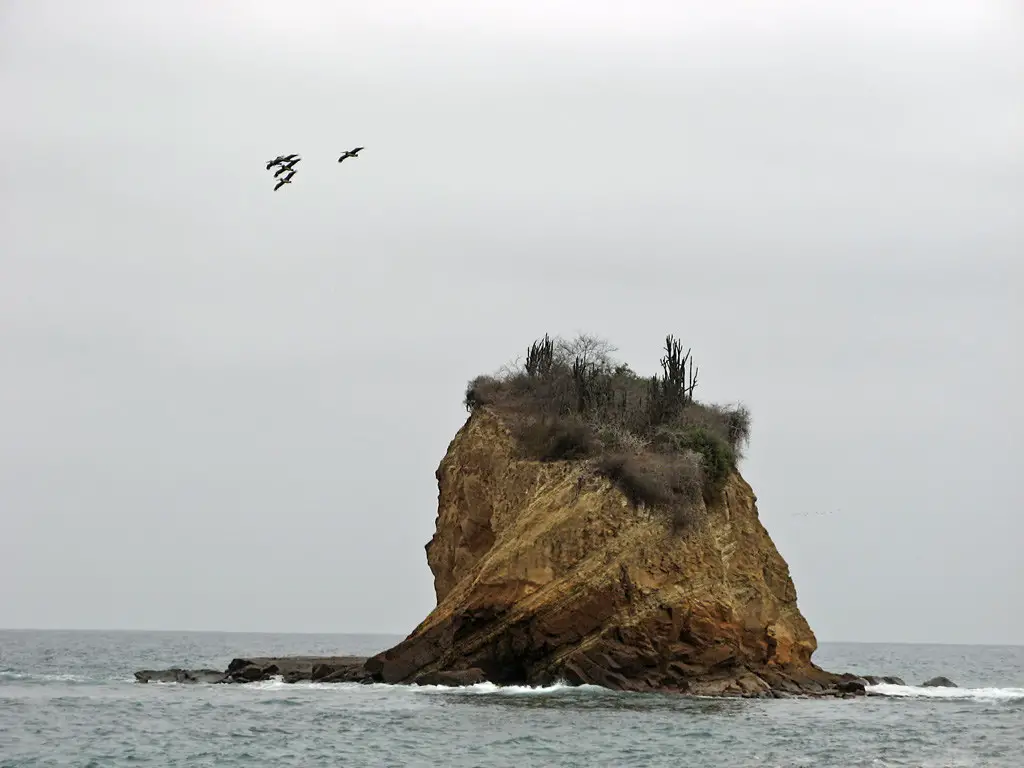
Los Frailes Beach is a stunning beach located on the coast of Ecuador.
What to see or do: Visitors can enjoy clear turquoise waters, white sand beaches, and the natural beauty of the surrounding landscape. Fishing, swimming, and snorkeling are popular activities.
Don’t miss: The breathtaking views of the beach from the nearby cliff tops.
Insider travel tips: – Los Frailes is a part of Machalilla National Park, so be sure to arrive early to beat the crowds and pay the park entrance fee.
17. Isla de la Plata
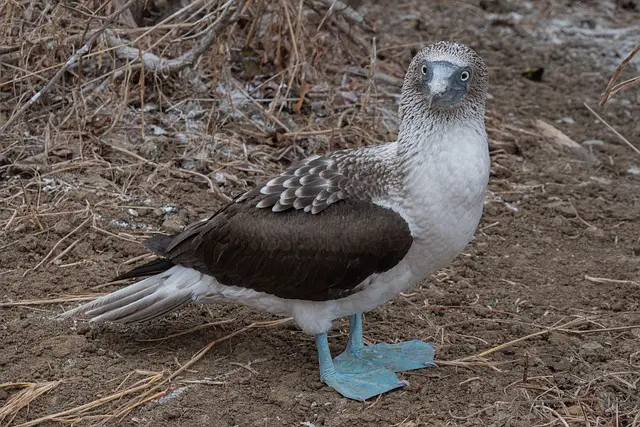
Isla de la Plata is a small island off the coast of Ecuador, known for its stunning natural scenery, diverse wildlife, and rich history.
What to see or do:
Don’t miss:
Insider travel tips:
18. Puyango Petrified Forest
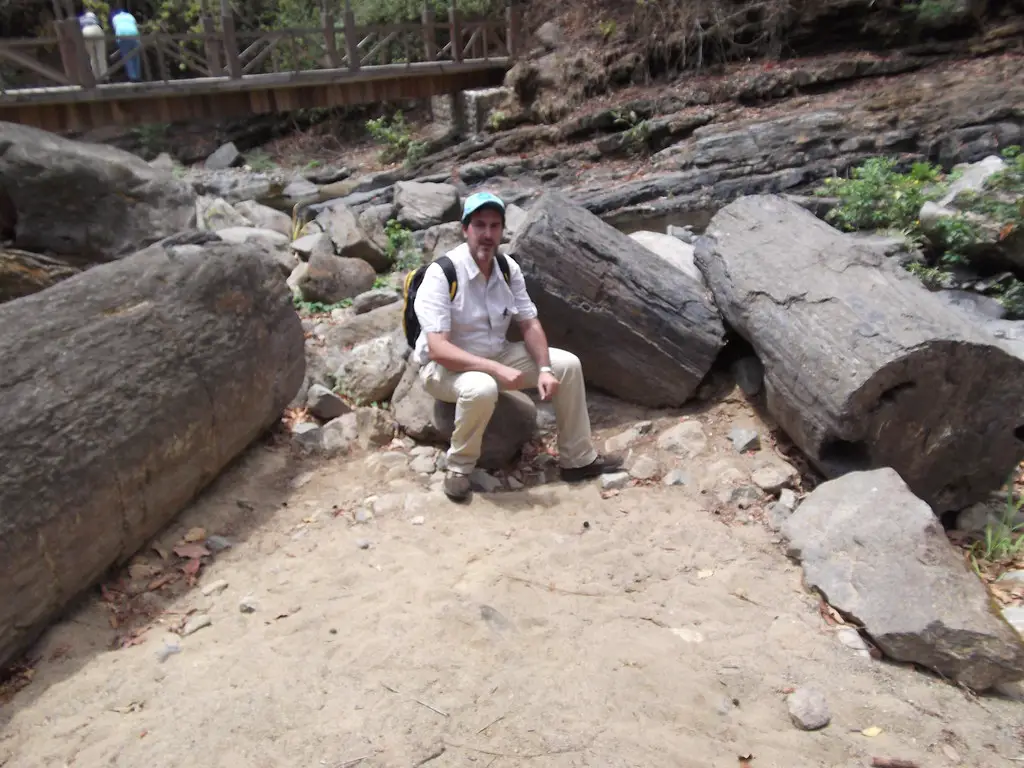
A unique forest filled with petrified trees and other ancient fossils in southern Ecuador.
What to see or do: Take a walk along the trails to see the various types of petrified trees, including some that are over 100 million years old.
Look out for other fossils like ammonites, mollusks, and even dinosaur bones. Visit the museum to learn more about the geological history of the area.
Don’t miss: The impressive petrified trees that have been transformed into stone pillars by thousands of years of erosion. These pillars are known as “stone trees” and are some of the most recognizable features of the park.
Insider travel tips: Visit early in the morning to avoid the heat and crowds. Wear comfortable shoes for walking along the trails, and bring sunscreen and plenty of water.
If possible, hire a guide to learn more about the history and science behind the petrified forest.
19. El Cajas National Park

El Cajas National Park is a protected mountainous area in Ecuador, located about 30 kilometers west of Cuenca.
What to see or do: El Cajas offers breathtaking landscapes of high altitude cloud forests, rugged mountain peaks, crystal clear lakes and meadows. It is a top destination for birdwatching, hiking, fishing, camping, and horseback riding.
There are many well-marked trails and a visitor center where visitors can obtain maps and information about the park.
Don’t miss: The park’s Laguna de la Toreadora is a beautiful lake set amidst rolling hills, surrounded by rocky cliffs, and offering stunning views of the surrounding landscape.
Other notable lakes include Laguna Larga and Laguna Taitachungo.
Insider travel tips: – The weather in El Cajas can be unpredictable, so be prepared for both sun and rain when you visit.
20. Saraguro Hill

Saraguro Hill is a natural landmark located in the Andean region of Ecuador, near the town of Saraguro.
What to see or do: Visitors can take a short hike to the top of the hill to enjoy panoramic views of the surrounding mountains and valleys.
Along the way, there are also several small shrines and viewpoints worth checking out.
Don’t miss: One of the highlights of Saraguro Hill is the opportunity to witness a traditional Saraguro cleansing ceremony, performed by local shamanic healers at one of the hill’s sacred sites.
Insider travel tips: – Wear sturdy shoes and bring plenty of water for the hike up the hill.
21. Churute Mangrove Ecological Reserve

Churute Mangrove Ecological Reserve is a protected area located on the coast of Ecuador.
What to see or do: Explore the lush mangrove forests, go birdwatching and see unique wildlife such as the black howler monkey, white-tailed deer, and American crocodiles.
Don’t miss: Take a boat tour through the mangroves, walk the La Perla Trail to see the tropical dry forest, visit the butterfly rescue center, and climb the observation tower for panoramic views of the reserve.
Insider travel tips: Make sure to wear comfortable walking shoes, bring insect repellent, and protect yourself from the sun and humidity. Reservations and permits are required to visit the reserve, so plan ahead to ensure availability.
22. Ingapirca Ruins
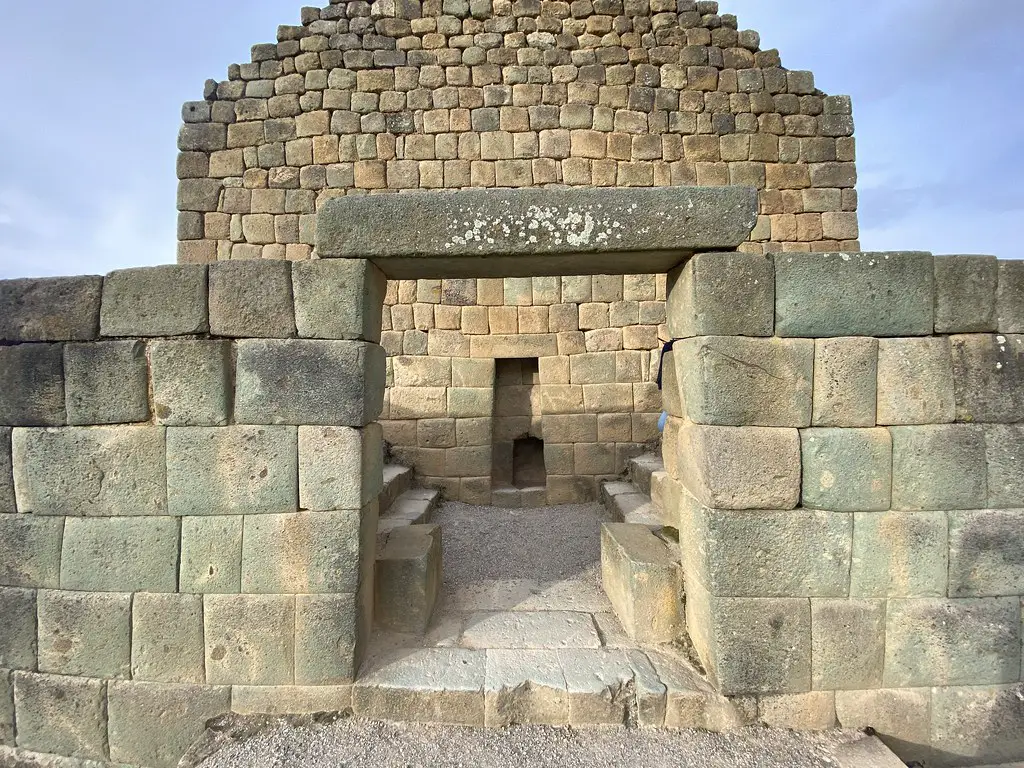
Ingapirca Ruins is a complex of ancient Incan ruins located on a picturesque hillside in the Andean mountains of Ecuador.
What to see or do: As you explore Ingapirca, you’ll see impressive examples of Incan architecture, including terraced structures, ceremonial sites, and intriguing stone walls and pathways.
Additionally, the site offers breathtaking views of the surrounding Andean landscape.
Don’t miss: One of the highlights of the Ingapirca complex is the Temple of the Sun, an impressive elliptical structure that was designed to align perfectly with the sun during the winter solstice.
Be sure to also take time to visit the Ona Canchi Museum, which houses a collection of artifacts and information about the history and culture of the region.
Insider travel tips: -Plan to spend at least 2-3 hours exploring Ingapirca, and wear comfortable shoes for the uphill walk.
23. Devil’s Nose Train
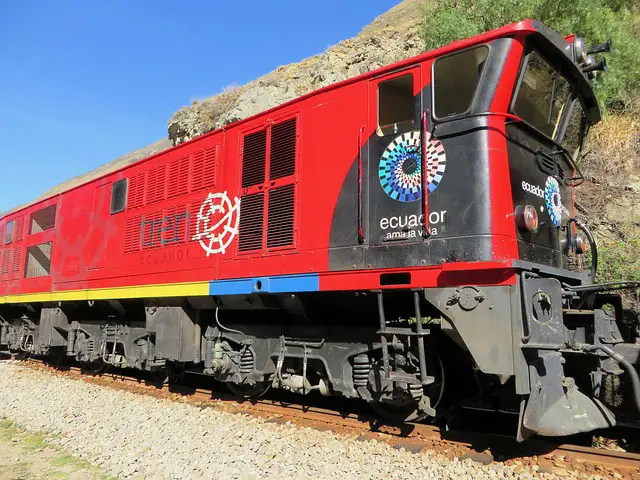
A thrilling train ride that traverses the Andes mountain range in Ecuador.
What to see or do: Passengers are treated to breathtaking views of the surrounding mountains and valleys as the train navigates the steep and winding tracks of the Devil’s Nose mountain.
Don’t miss: The highlight of the journey is when the train makes a daring descent down a 45-degree slope, allowing passengers to experience a true adrenaline rush.
Insider travel tips: Book your train tickets in advance to secure a seat, as this is a popular attraction amongst tourists. Additionally, bring warm clothing as the higher altitude can result in cooler temperatures.
24. Otavalo Market
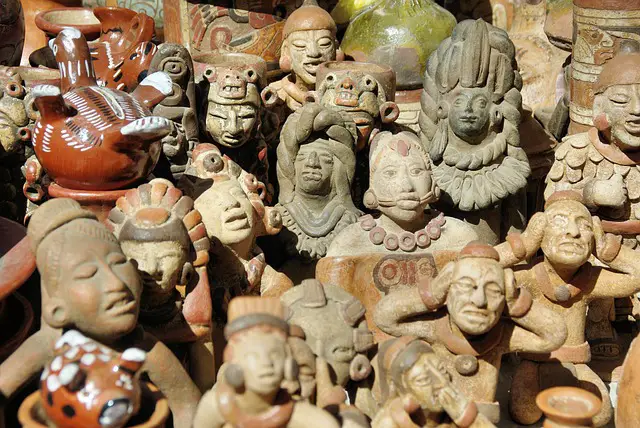
Otavalo Market is a famous open-air market located in the town of Otavalo in northern Ecuador.
What to see or do: The market is a popular destination for locals and tourists alike who come to admire the beautiful textiles, handcrafted pottery, jewelry, and other artisanal goods.
Visitors can also find fresh fruits and vegetables, as well as local delicacies such as cuy (roast guinea pig).
Don’t miss: Don’t miss the opportunity to haggle with vendors and try some of the delicious food sold throughout the market. Be sure to check out some of the colorful ponchos and other textiles made by Otavalo’s indigenous people.
Insider travel tips: – Arrive early to avoid the crowds and explore the market at a leisurely pace.
25. El Angel Ecological Reserve
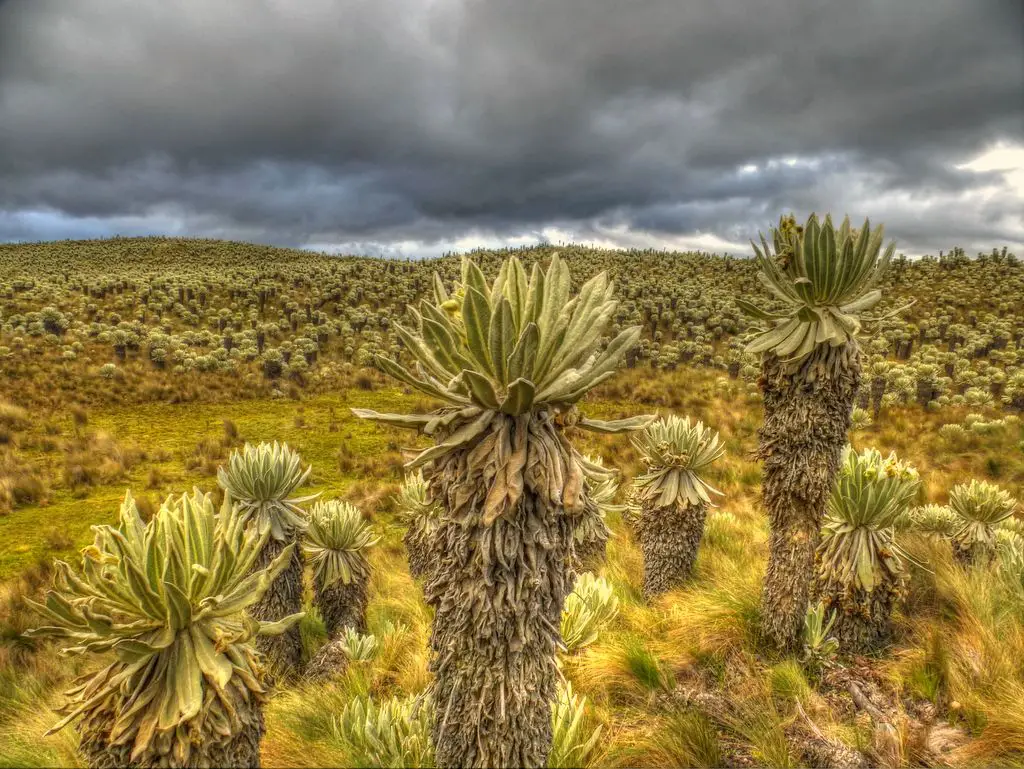
El Angel Ecological Reserve is a protected area located in the northern highlands of Ecuador, encompassing over 24,000 acres of páramo ecosystem and unique flora and fauna.
What to see or do: The reserve offers scenic hiking trails through the páramo grasslands, rocky outcroppings, and frailejón forests. Visitors can observe native species such as Andean condors, foxes, deer, and spectacled bears.
Additionally, there are several lagoons and waterfalls to discover.
Don’t miss: One of the highlights of the reserve is Páramo de los Conejos, a stunning landscape filled with the iconic frailejón plants and a great variety of animal life.
Another must-see location is the waterfall of El Ángel, a 75-foot fall surrounded by lush green forest.
Insider travel tips: Be sure to pack warm clothing since temperatures can drop drastically at this high altitude. Visitors should also bring enough food and water since there is limited infrastructure in the reserve.
Additionally, hiring a local guide is recommended for a better and safer experience.
26. Vilcabamba Valley
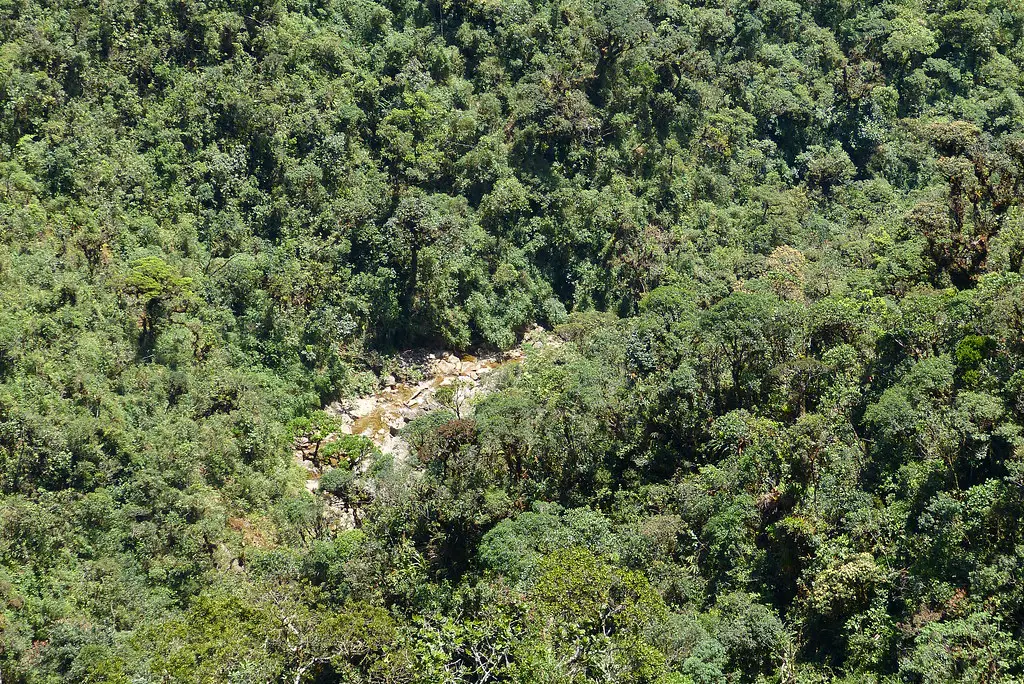
Vilcabamba Valley is a picturesque and tranquil valley nestled in the Andes mountains of southern Ecuador, renowned for its beautiful scenery and reputation as the “Valley of Longevity.
What to see or do:
Don’t miss:
Insider travel tips: -Visit Vilcabamba during the dry season (June to September) to avoid rain and enjoy the best hiking conditions.
27. Las Tintoreras
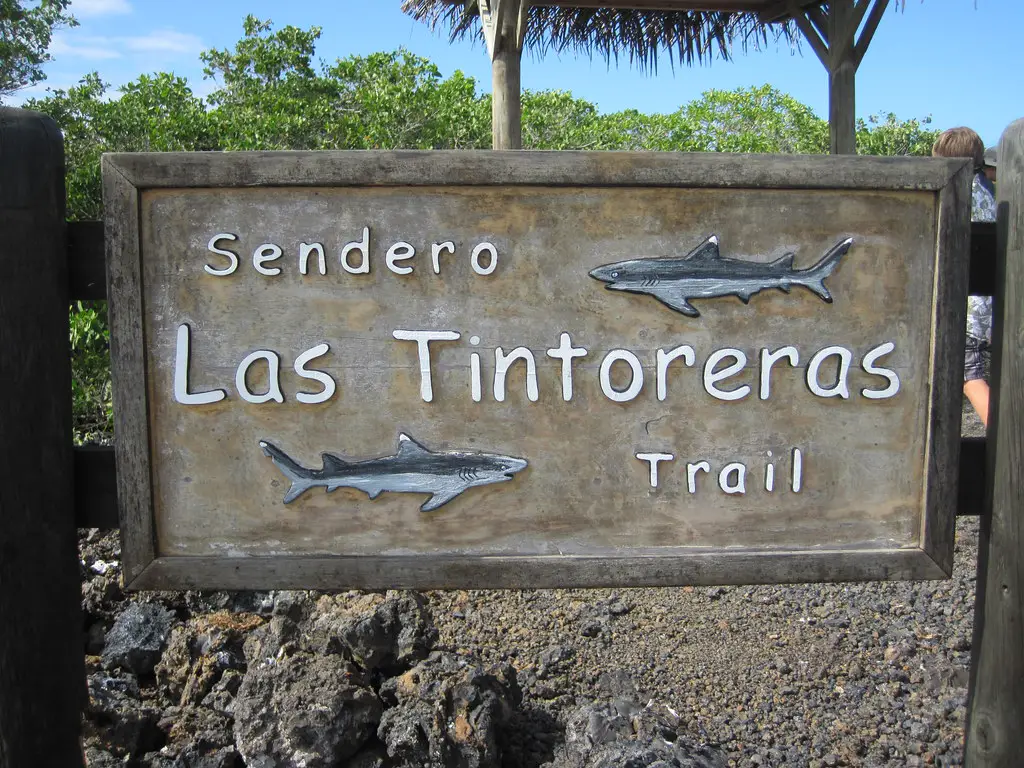
A group of small islands and lava formations located off the coast of Isabela Island in the Galapagos.
What to see or do: Spot a variety of wildlife including penguins, marine iguanas, sea lions, rays, and various species of fish while snorkeling or viewing from a boat tour.
Hike on the lava rocks to see the unique formations and take in the stunning panoramic views.
Don’t miss: Snorkeling with the sea turtles in the clear turquoise waters. They are abundant in this area.
Insider travel tips: It’s best to visit in the morning to avoid the heat and crowds. Wear comfortable shoes or sandals with good traction for walking on the rocky terrain.
✓ You on Insta? 👍@triplyzer✓ Find the best offers on your Stays on 🏡 booking.com
✓ Deals on Private xfers, SIM Cards, City tours, Day trips on 🛵 GetYourGuide | on 🛵 Klook